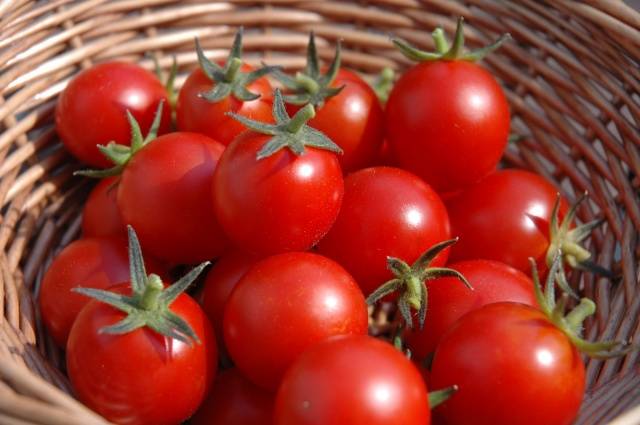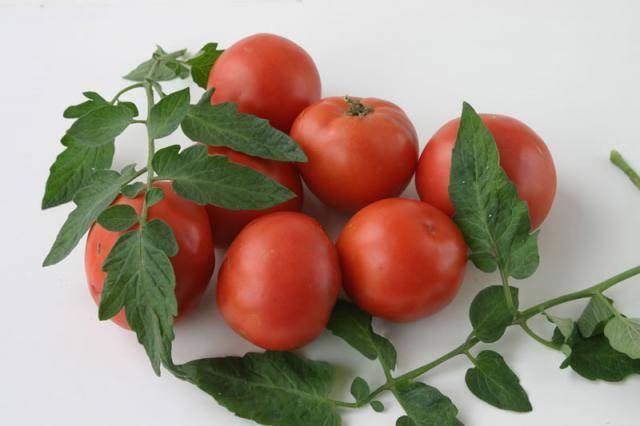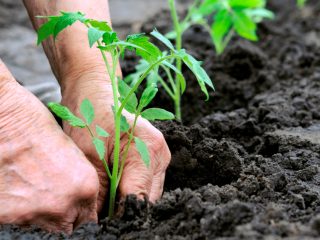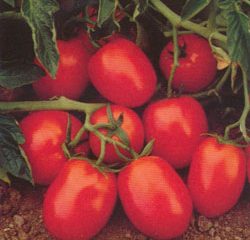Content
In Russia, in most regions, farming and gardening is a rather risky process. In conditions of changeable weather, every gardener wants his tomatoes to ripen. Sometimes this can only be done by growing early ripening varieties, especially when it comes to growing in open ground. This topic is very sensitive, so we will touch on it in more detail.
Growing tomatoes in open ground
At the moment, choosing a tomato variety is quite simple; the main thing is to know what kind of result the summer resident wants to get. The description presented on the packaging with seed material tells in great detail about the variety and the features of its cultivation.
It just so happens that in Russia, cucumber and tomato are the most popular vegetables in garden beds. A huge number of tomatoes are grown every year, including in open ground. This plant is capricious, it requires:
- better soil;
- prolonged heat;
- solar lighting;
- lack of drafts.
In order for the harvest to be rich when grown in open ground, it is necessary:
- choose the right variety that would satisfy taste requirements;
- provide growing conditions;
- carry out timely watering.
All gardeners involved in tomatoes are divided into two types:
- Self-growing seedlings from seeds.
- Those purchasing ready-made seedlings.
Whatever type you are, it is important to understand that the yield largely depends on the quality of the seedlings. Let's talk about growing low-growing tomatoes in open ground.
Planting process
Planting this crop in open ground should be done in late May - early June. Only when the threat of frost subsides can you start planting, otherwise the tomatoes will die.
When growing low-growing varieties, the planting scheme is as follows: 30x40 and 35x50. This means that you need to leave 30-35 centimeters between plants, and 40-50 between rows. Some gardeners use strip planting, while others prefer square planting. It all depends on convenience and personal preference.
As a rule, at the end of May, ready-made seedlings are planted in open ground. It is grown from seeds on the windowsill. If there is a lack of sunlight, the seedlings are illuminated. The holes for seedlings should have a depth of 10-15 centimeters. When planting, good seedlings are carefully removed from the hole, after moistening them first. The lower leaves are removed, leaving 3-4 upper ones. After all the plants are transplanted, water with water and mineral fertilizers at the rate of one liter per plant.
Tomatoes will take up to ten days to take root in a new place.
After two weeks, the seedlings are earthed up. Plants do not like excessive watering, as this can lead to fungal infection.
Low growing tomato varieties
When purchasing seeds in a store, some gardeners do not always pay attention to the labels on the packaging. With regard to low-growing varieties, it is important to distinguish two terms from each other:
- indeterminate varieties;
- determinant.
The first term refers to those tomatoes whose stem grows constantly. Nothing stops the development of a tomato. As for determinate varieties, they, on the contrary, stop growing after 4-5 clusters have formed. They are also divided into:
- superdeterminant;
- determinant.
The first type is very early tomatoes that are not subject to pinching. Not only residents of central Russia, where the summer is short, but also southerners pay attention to them.
After the formation of five to seven leaves, the first flower raceme grows on determinate plants. You will still have to tie up low-growing tomatoes, since the bushes often fall under the weight of the fruit. For the busiest gardeners, it is worth paying attention to standard varieties of tomatoes. Here they are do not require any stepsoning, no garter. Of course, you won’t be able to plant them and forget about them until the harvest appears, but there will be much less hassle with them.
The use of all these types of low-growing varieties for indoor soil is justified only in the northern regions, where greenhouses heated. In most regions, including the Urals, you can use early varieties of tomatoes for open ground. Low-growing plants are convenient to place on the site. Now let's look at specific varieties and hybrids of tomatoes.
Description of varieties
Each breeder tries to develop a variety of tomatoes that would best satisfy the needs of citizens.Growing should also be fun. As a rule, we are interested in:
- variety yield;
- taste qualities of fruits;
- speed of maturation;
- features of care;
- disease resistance.
Let us describe the popular early ripening varieties of low-growing tomatoes in as much detail as possible so that there are no questions regarding their cultivation in open ground.
Boni-M
The Gavrish company was one of the first to produce seeds of this low-growing tomato variety intended for open ground.
Its ripening period is only 80-85 days, the fruits are bright red in color, and approximately 2 kilograms are harvested from the plant. As for the type of bush, it does not exceed 50 centimeters in height and is considered standard. The tomato is resistant to late blight and tolerates short-term cold snaps well.
Raspberry Viscount
Most often, this compact, low-growing tomato is grown in the south of Russia. He is famous large raspberry fruits that weigh 200-300 grams. The height of the plant is only 45-50 centimeters. Productivity is high, tomatoes ripen in 95-105 days. The value also lies in the fact that the fruits are quite sweet and are ideal for fresh consumption.
Liana
Ultra-early ripening low-growing tomato varieties are especially valuable. "Lyana" is one of the five most popular for cultivation in our country. This is no coincidence.
The variety has a number of advantages: it ripens in just 84-93 days, has excellent taste, and tolerates transportation well over long distances. The height of the bush rarely reaches 40 centimeters, therefore, we can say that this variety is dwarf. TMV resistance further provides durability.
Yablonka Russia
This variety of Siberian selection is classified as a plant “for lazy” summer residents. The whole point is that it does not need to be pinched, it does not require careful care, and the yield is quite high. The average height of the bush is 50-60 centimeters, each of which produces 3-5 kilograms of excellent fruits weighing up to 100 grams.
The ripening period from the moment the first shoots appear is 85-100 days, no more. Since tomatoes are medium in size, they are most often used for canning. Despite weather changes, the ovaries form together and are resistant to major diseases.
Sanka
Perhaps the most popular variety of tomatoes is “Sanka”. Sweet, juicy tomatoes on a determinate plant ripen in an extremely short period (78-85 days). Its use is universal due to the excellent taste and medium size of the tomato.
An additional quality of the “Sanka” variety is the repeated yield of the crop and fruiting until frost. Initially, gardeners collect the first early harvest, and after that the plant grows well and bears fruit again. Ideal for growing in the vast expanses of Siberia. A good video about the Sanka variety is presented below:
Solerosso F1
Already from the name it is clear that this is a hybrid. It is distinguished by small fruits weighing up to 60 grams. At the same time, from one square meter you can harvest up to 10 kilograms of excellent quality crop. It ripens in just 80-85 days, which classifies it as an early ripening variety. The bush is low-growing, its maximum height does not exceed 60 centimeters.
Andromeda F1
A hybrid with this name is ideal for hot climates. Sometimes this is very important, because excessive sun can harm tomatoes. It tolerates heat well, and productivity does not decrease in any weather.Sweet, meaty and large, they are great for salads. Ripens in 85-117 days. The bush is not very leafy, reaches a height of 70 centimeters, requires pinching and gartering, since the fruits are quite heavy. Each cluster produces 5-7 fruits.
Marmande
Early-ripening tomatoes of the Dutch selection for open ground “Marmande” are extremely beautiful. Their photos can be seen below. The bush of the plant is determinate, its average height reaches 50 centimeters. From the moment the first shoots appear until actual ripeness, 85-100 days pass. The fruits are large, fleshy, and almost not affected by diseases. The color is dark red.
Oak
In pursuit of early ripening varieties, one should not forget about yield and disease resistance. For example, late blight is dangerous for tomatoes and can cause enormous harm. The variety “Dubok”, which is resistant to it, bears fruit well. You won’t have to wait long for the harvest, only 85-105 days.
“Dubok” is a variety of Siberian selection; it was bred in Altai, so it is not surprising that the plant tolerates cold well. The tomatoes taste sweet and sour. The height of the bush does not exceed 60 centimeters.
Siberian early ripening
This variety is not a true early ripening variety, but for the northern region it is capable of producing fruit very quickly if there is a lack of heat and sunlight. This period ranges from 110 to 120 days. From a square meter you can get up to 7 kilograms of excellent quality fruit. The bush is determinate, does not exceed a height of one meter. The variety is resistant not only to cold weather, but also to TMV, as well as brown spot.
This tomato of Siberian selection has been known for a long time, but it can easily compete with modern resistant tomato varieties.
"Subarctic"
Tomato varieties such as “Cherry” are loved by many for their shape and taste. The Subarctic tomato is a beautiful small tomato bred by our breeders for growing in unstable weather conditions.
Round red and very tasty fruits weighing 40 grams on a branch look very attractive. bush plant standard height 40-45 centimeters. The ripening period of the variety from the moment the first shoots appear is 82-86 days. The excellent quality of the variety is its ability to produce a high-quality harvest in unfavorable weather conditions. For Siberia, the Urals and other regions, it will be a real find. Despite the fact that tomatoes are small, up to 8 kilograms of fruit can be collected from one square meter. The plant steadfastly avoids late blight due to its precocity.
Katyusha F1
Seeds of Katyusha hybrid tomatoes are now becoming more and more common, since this hybrid has become known on the market as cold-resistant. Despite their early ripening (ripening 80-85 days), the tomatoes are strong, meaty and tasty. They transport well and store quite well. The yield is high - from 9 to 10 kilograms per square meter. Additionally, I would like to note the plant’s resistance to TMV, cladospirium and fusarium.
Little Red Riding Hood
Low-growing tomatoes “Little Red Riding Hood” ripen in 90-110 days, are medium in size and are perfect for canning, preparing salads and pickles. The weight of one fruit does not exceed 100 grams. The plant is resistant to a range of diseases, the fruits do not crack. Each bunch produces 4-5 tomatoes. It is often grown on an industrial scale because it is easily transported and stored. This variety was bred by German breeders.
Torbay F1
This hybrid is used in the preparation of salads and for fresh consumption, as the vegetables are very tasty. The benefits include:
- ripening speed (75 days in total);
- excellent taste (rating 5);
- good set, uniformity of tomatoes;
- crack resistance.
The tomatoes are large, up to 200 grams, and meaty. The color of tomatoes is pink. Many gardeners associate pink fruits with great taste. Below is a video of how this Dutch hybrid grows:
Bagheera F1
Tomatoes for open ground "Baghira" ripen in 85-100 days and are famous for their high commercial and taste qualities, as well as resistance to the following diseases:
- brown spot;
- fusarium;
- verticillium wilt;
- nematode.
The bush is low-growing, determinant, the yield is on average 6 kilograms per square meter. Since the fruits are large, the plants will have to be tied up. The use of the Bagira hybrid is universal, the sowing scheme and care are standard.
Conclusion
Early low growing tomatoes valuable due to their rapid maturation. Especially often the seeds of such plants are bought in middle lane Russia. You don’t have to set up greenhouses for tomatoes, but make do with your own beds in an open area. That is why today there are so many varieties of early tomatoes on store shelves. Among the variety, choosing the right tomato is very difficult, especially if you lack experience. Always read the description carefully. When going for seeds or seedlings, carefully study the terms and varieties.



























